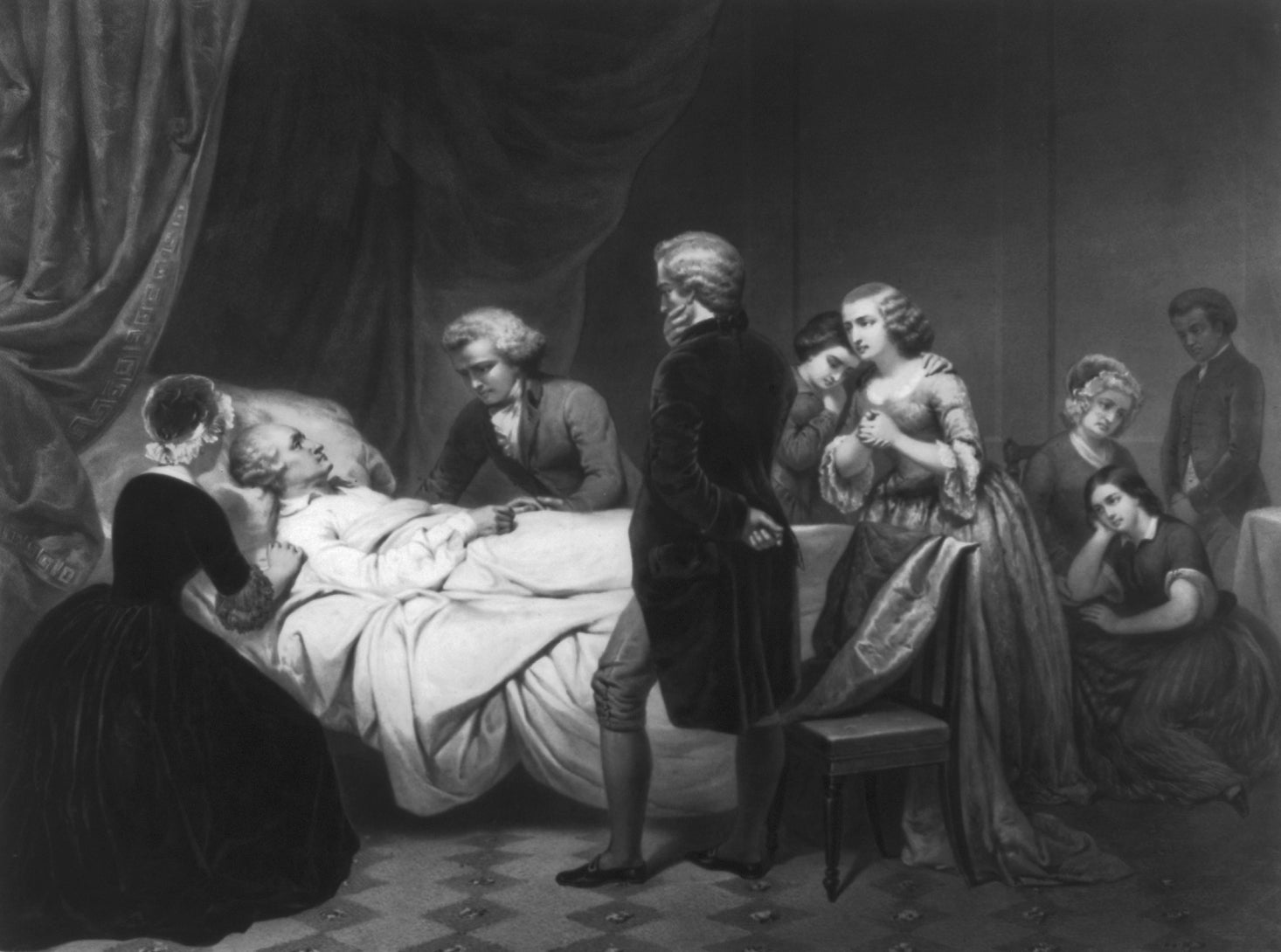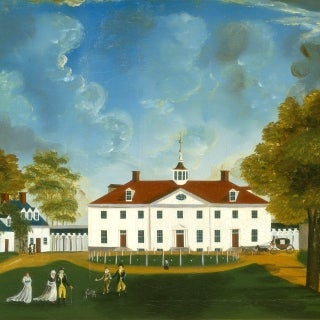Two Centuries Later, Diagnosing What Killed George Washington
December 14 is a sad day at Mount Vernon. Or at least it was in 1799 when George Washington, the father of our country, died of an unknown illness, which came on quickly.
The beginning of the end for Washington came two days earlier when he went for a long horseback ride around his plantation in snowy, 30-degree weather. He awoke the next morning with a severe sore throat and the symptoms got progressively worse from there: hoarseness, cough, chills, difficulty breathing, difficulty swallowing, fever and loss of voice.
In an effort to rid the President of his illness, Colonel Tobias Lear, Dr. James Craik, Dr. Elisha Cullen Dick and Dr. Gustavus Richard Brown followed common medical practice of the day and bled him... repeatedly. An incredible 5 pints of blood were removed from Washington's body in sixteen hours. (Today the Red Cross won't take more than 2 pints every eight weeks!) Washington grew steadily weaker and died between 10 and 11 pm on December 14.
So, what exactly — besides the treatment, which, by the way, Martha Washington opposed — killed the father of our country?
Dr. White McKenzie Wallenborn, M.D. of the University of Virginia Medical Center tried to answer that question in 1997. Looking at accounts of Washington's final days through the lens of modern medicine, he considered several possible causes of death. Leading candidates included acute diphtheria (laryngeal diphtheria), quinsy, acute laryngitis, and Ludwig's angina. But in the end, he concluded that Washington was a victim of acute epiglottitis, "a severe, rapidly progressing infection of the epiglottis and surrounding tissues that may be quickly fatal because of sudden respiratory (airway) obstruction by the inflamed structures."
Wallenborn certainly wasn't the only one to consider the matter and not all agree with his findings. But, he certainly deserves credit for trying! Diagnosing an illness two centuries later can't be easy!




![Newspaper advertisement for Ona Judge, runaway slave [Source: Encyclopedia Virginia]](/sites/default/files/styles/crop_320x320/public/2024-05/Ona%20Judge%20-%20Runaway%20Ad.jpg?h=10a38b52&itok=0_-DEpCm)

![Sketch of the mythical fuan by Pearson Scott Foresman. [Source: Wikipedia]](/sites/default/files/styles/crop_320x320/public/2023-10/Goatman_Wikipedia_Faun_2_%28PSF%29.png?h=64a074ff&itok=C9Qh-PE1)












